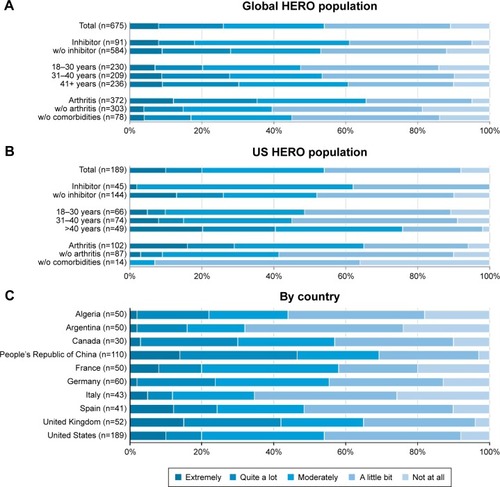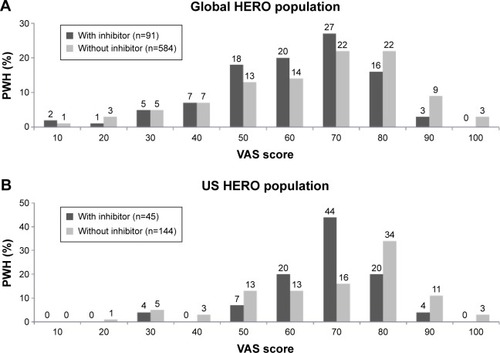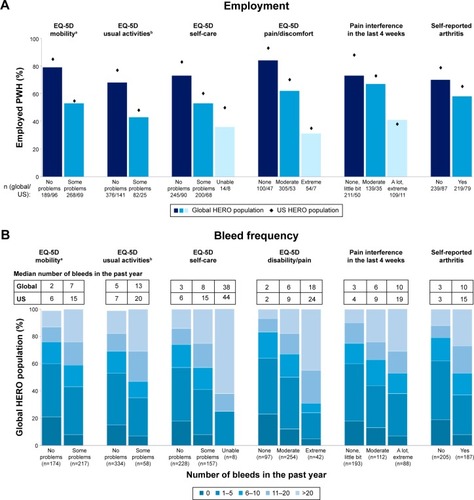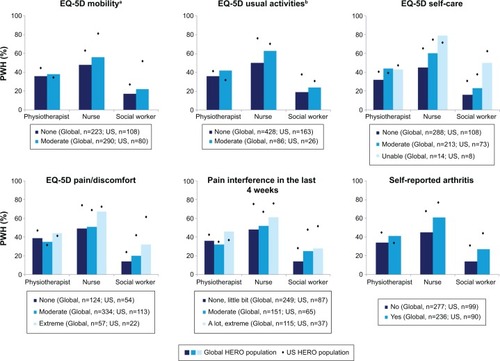Figures & data
Figure 1 Extent to which pain has interfered with daily life over the past 4 weeks.
Abbreviations: HERO, Hemophilia Experiences, Results and Opportunities; w/o, without.

Table 1 EQ-5D index by hemophilia type and treatment regimen for adult global and US HERO populations
Table 2 EQ-5D index by country
Table 3 EQ-5D index by age group
Figure 2 “VAS health” score for patients with and without inhibitors.
Abbreviations: HERO, Hemophilia Experiences, Results and Opportunities; PWH, persons with hemophilia; VAS, visual analog scale.

Figure 3 Employment and bleed frequency by EQ-5D, pain interference, and self-reported arthritis.
Abbreviations: HERO, Hemophilia Experiences, Results and Opportunities; PWH, patients with hemophilia.

Figure 4 HCP utilization by EQ-5D, pain interference, and self-reported arthritis.
Abbreviations: HCP, health care practitioner; HERO, Hemophilia Experiences, Results and Opportunities; PWH, patients with hemophilia.

Table S1 Demographics of the eight-country post hoc analysis patient population
